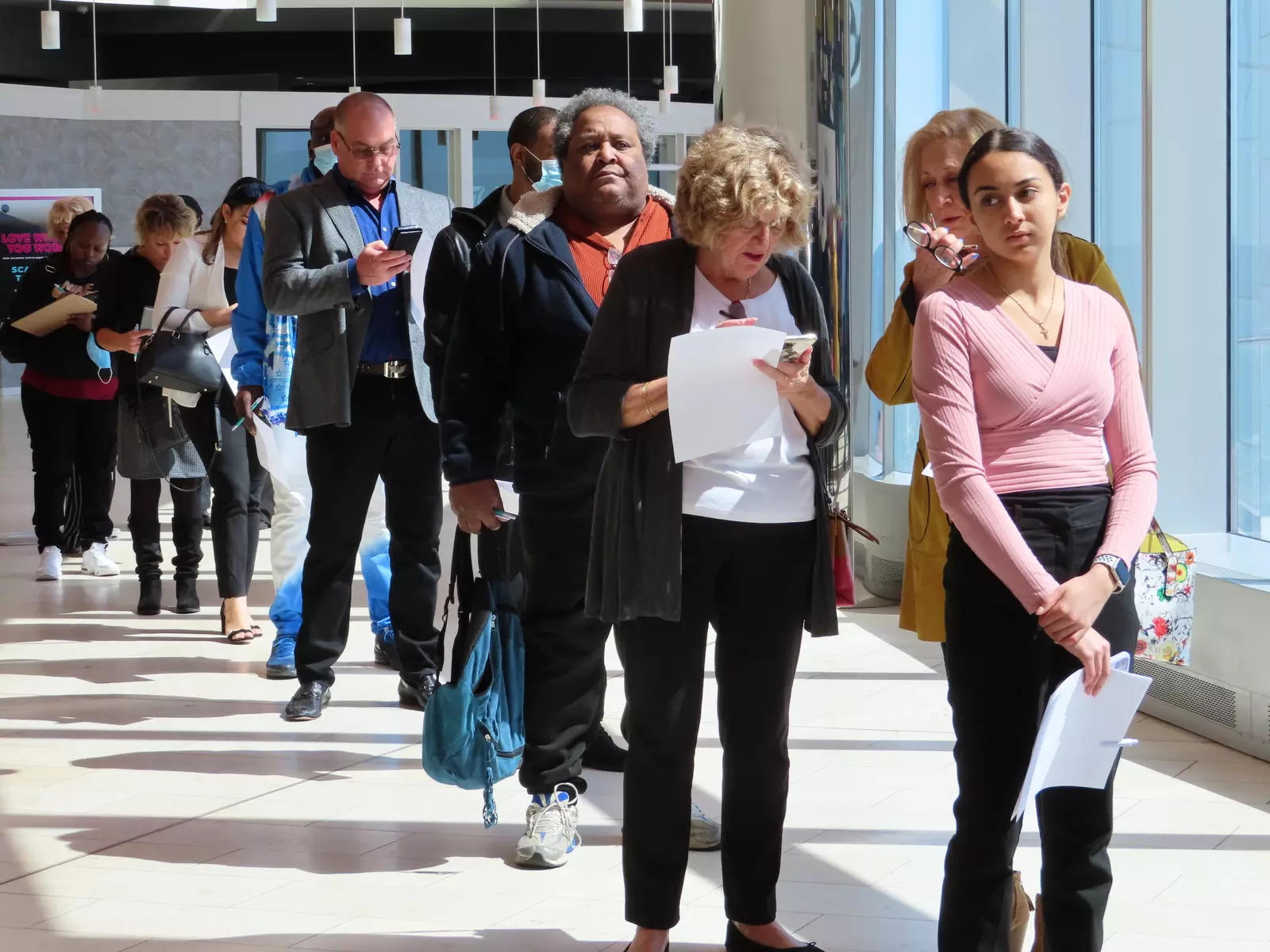America’s ongoing labor shortage begs an important question: Where have all the workers gone?
There are 10.7 million unfilled jobs in the U.S., according to the latest data from the U.S. Bureau of Labor Statistics. Some economists point to the high numbers of workers quitting amid the Great Resignation. New research highlights another troubling factor that may bear part of the blame: long Covid.
A Brookings Institution report published Wednesday says an estimated 16 million Americans between ages 18 to 65 are experiencing Covid symptoms long after infection. The condition, dubbed long Covid, can include brain fog, fatigue, breathing problems, muscle pain, headache, chest pain and even anxiety or depression — all symptoms that can make it challenging for people to work.
The report estimates that 2 million to 4 million of those people are currently out of work due to long Covid. That’s almost as high as the number of Americans who quit their jobs each month amid the Great Resignation: About 4.2 million quit their jobs in June and nearly 4.3 million quit in May and April, respectively, according to the Bureau of Labor Statistics.
In other words, the jobs lost to long Covid could make up about a third of the country’s current labor shortage. And the Brookings report says it’s costing the U.S. economy in a significant way.
Billions of lost earnings due to long Covid
Based on the average U.S. wage of $1,106 per week, the report estimates that 3 million people out of work due to condition translates to $168 billion a year in lost earnings. If 4 million long Covid patients are out of work, the lost earnings could be as high as $230 billion, the report says.
That’s nearly 1% of the country’s current-dollar gross domestic product (GDP) of $24.88 trillion.
Those high numbers might not even account for the “full economic burden” of long Covid, the report says. That’s because they don’t account for lower productivity among the many long Covid patients who are working while sick, or the health care costs and lost productivity of their caretakers.
As long as Covid circulates in the U.S., the number of people with long Covid symptoms will continue to grow: About one in four Covid patients experience long-term symptoms weeks or months after getting infected, according to multiple studies published last year.
The Brookings report notes that if the country’s long Covid population grows by just 10% each year, the annual cost of lost wages will amount to half a trillion dollars in 10 years: “If long Covid patients don’t begin recovering at greater rates, the economic burden will continue to rise.”
Long Covid is more common than you may think
As a medical condition, doctors and scientists are still trying to untangle many puzzles related to long Covid. One thing is clear: Anyone can get it.
In March 2021, a University of California at Davis Health analysis of multiple long Covid studies found that even patients with mild conditions can experience long Covid. Perhaps unsurprisingly, the most likely patients to develop symptoms are those with initial infections severe enough to require hospitalization, the analysis said.
A May study from the Washington University School of Medicine in St. Louis found that both unvaccinated and vaccinated people are at risk of long Covid. The risk is higher for the unvaccinated, but the study suggested that vaccines only reduce the risk of long Covid by 15%.
The condition can undeniably impact a patient’s life, work and health. Last year, the Americans with Disabilities Act labeled long Covid a disability because of how it can limit the major life activities of patients.
A July 2021 study from the Patient-Led Research Collaborative measured the condition’s effect on patients’ work over the course of seven months. Only about 27% of long Covid patients worked as many hours as they did before failing ill. Roughly 23% weren’t working at all, as a direct result of long Covid. That included being on sick leave, disability leave, quitting, being fired or being unable to find a job that would accommodate them.
Ongoing and future research could help determine how to treat the condition, which could get many of those workers back into the workforce. Experts say they’re hopeful that they can find answers soon.
“I’m cautiously optimistic that given the amount of attention that people are bringing to long Covid that we’re going to get some answers and hopefully some interventions that help people,” Eric Rubin, editor-in-chief of the New England Journal of Medicine, told CNBC Make It earlier this month.
Source : CNBC















